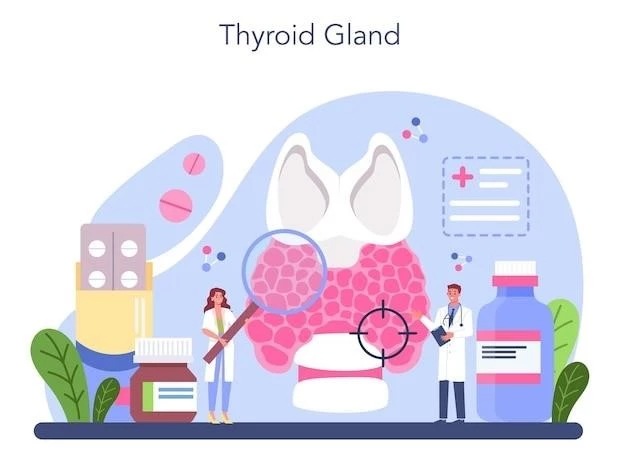Overview of Thymus Neoplasm
The thymus, a primary lymphoid organ, undergoes changes due to aging and pathological conditions, making it challenging to distinguish between benign and neoplastic changes, complicating diagnoses.
Thymus Neoplasms and Myasthenia Gravis
Thymic neoplasms, including thymoma and thymic carcinoma, are tumors that develop in the thymus gland. Individuals with thymic neoplasms often present with myasthenia gravis, an autoimmune disorder causing muscle weakness. The relationship between thymus neoplasms and myasthenia gravis underscores the complex interplay between the immune system and cancer development.
Types of Thymus Neoplasms
Thymic neoplasms encompass a range of tumors, including thymoma, thymic carcinoma, neuroendocrine tumors, and rare mediastinal germ cell tumors. These neoplasms exhibit diverse pathologic characteristics and clinical manifestations.
Thymoma
Thymoma is a tumor that can be benign or malignant, originating from the cells of the thymus gland. This type of neoplasm is part of the broader category of thymic epithelial tumors, which also includes thymic carcinoma. Thymomas are relatively rare and manifest as growths in the chest area, often affecting individuals above the age of 50.
Thymic Carcinoma
Thymic carcinoma, a type of thymic epithelial tumor, is a rare cancer arising from the cells covering the outside surface of the thymus gland. Unlike thymoma, thymic carcinoma is more aggressive and less common, posing diagnostic challenges due to its varied histopathological features and clinical behavior.
Diagnosis of Thymus Neoplasms
The diagnosis of thymus neoplasms involves various methods, including evaluating symptoms, conducting imaging tests like CT scans and MRIs, and performing biopsies to confirm the type and extent of the tumor.
Symptoms and Signs
Symptoms of thymus neoplasms may vary but can include chest pain, cough, difficulty swallowing, weight loss, and respiratory issues. Additionally, individuals with thymomas or thymic carcinomas may exhibit symptoms related to the compression of adjacent structures in the chest.
Imaging Tests
Diagnostic imaging tests such as CT scans, MRIs, and chest X-rays play a crucial role in identifying thymus neoplasms. These imaging modalities help visualize the location, size, and characteristics of the tumors within the thymus gland, aiding in the diagnosis and treatment planning process.
Treatment Options for Thymus Neoplasms
Treatment options for thymus neoplasms typically include surgery, chemotherapy, radiation therapy, and in some cases, targeted therapies or immunotherapy. The choice of treatment depends on the type and stage of the neoplasm.
Surgery
Surgical intervention plays a crucial role in the treatment of thymus neoplasms, aiming to remove the tumor either through complete resection or debulking procedures. Surgeons may opt for minimally invasive techniques or open surgery, guided by the tumor’s size, location, and staging.
Chemotherapy and Radiation Therapy
Treatment options for thymus neoplasms such as thymoma and thymic carcinoma may include chemotherapy and radiation therapy in addition to surgery. These modalities are used to target cancer cells and reduce tumor size, particularly in cases where complete surgical removal may not be feasible.
Prognosis and Survival Rates
Thymus neoplasms present varying prognosis and survival rates based on factors like tumor type, stage, and treatment efficacy. Understanding 5-year relative survival rates and prognostic factors is crucial for patient management.
5-year Relative Survival Rates
Thymus neoplasms exhibit varying 5-year relative survival rates depending on factors like tumor stage and treatment. Understanding these rates assists healthcare providers in counseling patients and determining optimal treatment strategies.
Prognostic Factors
Prognostic factors for thymus neoplasms include tumor type, stage, histological characteristics, and patient age. Understanding these factors helps oncologists predict disease progression, tailor treatment plans, and evaluate the overall prognosis for individuals diagnosed with thymic tumors.
Ongoing research focuses on understanding the molecular mechanisms underlying thymus neoplasms, exploring targeted therapies, immunotherapies, and new treatment modalities to improve outcomes for individuals with thymic tumors.
Thymus Neoplasm Research and Development
Current studies and drug development in the field of thymus neoplasms focus on advancing treatment options through targeted therapies, immunotherapies, and novel approaches to improve patient outcomes and quality of life.
Thymus Neoplasm Associated Autoimmunity
Research indicates that thymus neoplasms can be associated with autoimmune conditions like myasthenia gravis. Understanding the interplay between these conditions is crucial for optimizing patient care and treatment outcomes.
Unique Biological Properties of Thymus Neoplasms
Thymus neoplasms, encompassing thymoma and thymic carcinoma, demonstrate unique biological properties linked to their origin from thymic tissue. Understanding these properties aids in distinguishing these rare tumors and developing targeted treatment approaches.
Thymus Neoplasm and Targeted Therapies
Research and development in thymus neoplasm treatment focus on targeted therapies to improve patient outcomes. These therapies target specific molecules to effectively treat thymic tumors and minimize side effects, leading to more personalized and efficient treatment strategies.

Thymus Neoplasm Histopathological Characteristics
Thymus neoplasms, such as thymoma and thymic carcinoma, exhibit unique histopathological characteristics related to their origin in the thymus gland. Understanding these distinctive features is crucial for accurate diagnosis and effective treatment of these rare tumors.
Thymus Neoplasm and Multiorgan Autoimmunity
Thymus neoplasms, particularly thymomas, can trigger multiorgan autoimmunity, a rare paraneoplastic syndrome that involves autoimmune reactions affecting various organs like the thyroid, liver, and intestines. Understanding this complex interplay is essential for comprehensive patient management and treatment.

Thymus Neoplasm in Clinical Practice
Thymus neoplasms, including thymoma and thymic carcinoma, present diagnostic and treatment challenges due to their rarity and complexity. Clinical management involves a multidisciplinary approach, utilizing surgery, chemotherapy, and radiation therapy to optimize patient outcomes.
Thymus Neoplasm and Modern Immunology
Advancements in modern immunology have shed light on the intricate relationship between thymus neoplasms and the immune system. Understanding how the immune response influences the development and progression of thymic tumors contributes to novel therapeutic approaches and personalized treatment strategies.
